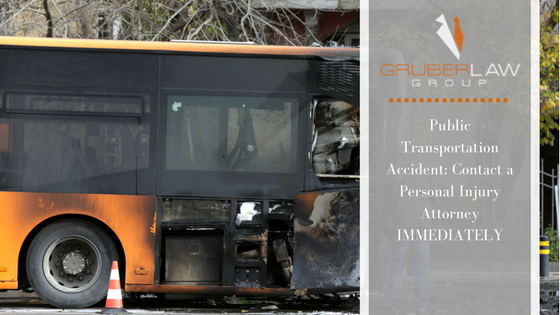
Laws surrounding public transportation accidents, including accidents and injuries waiting for or riding MUNI or BART, are somewhat contradictory. The laws provide both expanded opportunities for injury victims’ recovery under “common carrier” laws and limitations that result from immunities given to public agencies. You have only 6 months to file a government tort claim and you MUST contact a personal injury attorney for your public transportation accident IMMEDIATELY.
To help parse through what these elements can mean for a personal injury case, a public transportation accident attorney should be consulted immediately. Their familiarity with both the relevant laws and with litigation against public agencies can shed light on beneficial strategies that often increase victims’ chances of successful recovery.
If you have been the victim of an injury incurred while using public transit or from getting in a collision with a public transit vehicle, here are some of the factors you can consider as you seek recovery for your damages:
Common Carrier Laws Instruct Public Transportation Employees to Use a Higher Standard of Care
Many personal injury suits use negligence doctrines, where one of the tests is whether someone acted contrary to what a hypothetical “reasonable person” might do under the same circumstances.
However, under California Law, public transportation services and employees — known as “common carriers” in legal terms — have to go above and beyond what a “reasonable person” might do. California Civil Code §2100 states that common carriers “must use the utmost care and diligence for their [passengers’] safe carriage, must provide everything necessary for that purpose, and must exercise to that end a reasonable degree of skill.”
Under this law, and its related jury instructions California Civil Jury Instruction 902, common carriers have heightened duties and expectations to keep passengers safe, which encompasses harm caused by other passengers. Their duties include operating the vehicle safely and responding to any known hazards to the best of their abilities.
If an injury occurs, common carrier employees, administrators and others face increased scrutiny, and they are open to a higher degree of liability for their actions and decisions, including their duty to hire qualified employees and properly train them.
Common Carrier Liability for “Dangerous Conditions”
California Government Code §835 states that public entities could be liable for any injuries that are caused by a “dangerous condition” under the following circumstances:
- The vehicle or property in question had a dangerous condition present at the time an injury occurred
- The injury was proximately caused by the dangerous condition
- The danger posed a “reasonably foreseeable risk” similar or identical to the injury that occurred
- The dangerous condition resulted from negligence or wrongdoing according to the heightened standard of care expected of common carriers, OR the public entity responsible for maintaining the property knew about the condition in advance of the injury but did not take measures to correct it
Note that a dangerous condition can also involve locations near or related to the transit system’s operation. For example, Bonanno v. Central Contra Costa Transit Authority, 30 Cal. 4th 139 (2003) found that the transit authority was liable for a bus stop design that required an unsafe street crossing and that had been the subject of many prior complaints.
Immunity, Statutes of Limitations for Common Carriers, and the Benefits of a Public Transportation Accident Attorney
Civil torts based on injuries generally have a two year statute of limitations under California law, but torts against public agencies require filing within six months. This shorter window requires injury victims to handle a lot of paperwork and assemble many case factors in a short amount of time. Failure to meet the 6 month filing deadline will FOREVER bar a claimant from seeking monetary compensation for his or her injuries.
Furthermore, California Government Code §830.6 provides immunity for public agencies from torts based on the design of public improvements and transit facilities if they can prove that the design was somehow “reasonable” (see: BART Dist. v. Superior Court, 46 Cal. App. 4th 476 (1996))
All of these immunities and additional bureaucratic requirements make cases public transit related injuries more complicated compared to the typical personal injury case. Hiring an experienced public transit injury lawyer in San Francisco can therefore make cases easier to handle while potentially increasing your chances of successful recovery.









Leave a Reply